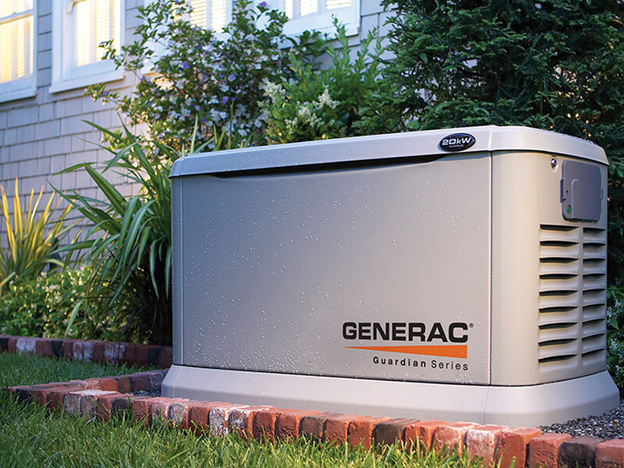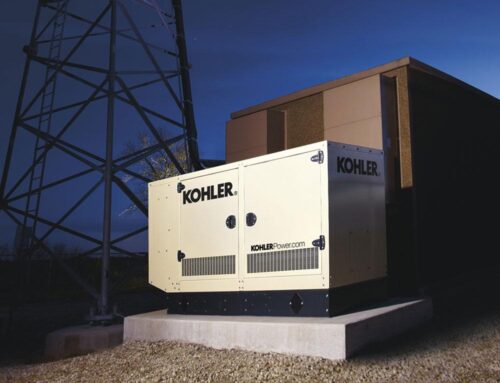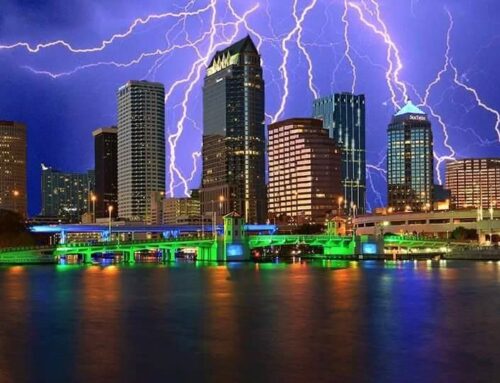Considering a whole home generator? Without a technical background, it can be hard to know where to begin. Liquid propane or natural gas? How lengthy is the installation process? What is the wattage? Why does someone need to remotely monitor a generator? Today, we’re answering three common questions we receive when installing a new generator.
Whole-house generators range in wattage capacity anywhere from 22 – 48kW, whereas your typical standby generator rangers from 9kW to 20kW. This added power gives you the peace of mind you deserve knowing you won’t have to make difficult choices like choosing whether to run a single air conditioner or lighting versus a refrigerator or entire home. Whole-house generators feature liquid-cooled engines for longer run times without maintenance, more high-tech programming, and a wider variety of fuel options like natural gas, liquid propane, and diesel. Essentially, your house will be fully functional, and ready to take on any storm.
As Tampa’s leading home generator company, we’ve put together the most important questions you should be asking your installer to ensure you pick the perfect whole house generator to fit all your needs.
- What fuel source will best fit my needs?
A necessary step for deciding on the best standby for your home is by first identifying the fuel type. Small home standbys only use natural gas or propane, whereas whole-house generators come with a diesel option. Since it’s less flammable, diesel is regarded as the safest choice but not the most feasible. Diesel engines typically expel more emissions which make them less popular for residential applications.
What is the generator installation process like?
At Suncoast Power Solutions, we follow a six-step process to ensure your generator is installed to perform its best when you need it most. Before we can begin the installation process, we need you to provide us with the necessary documents to begin the permitting process, listed as follows: Deposit, Notice of Commencement, Site Survey, and Signed Estimate. Once the permit has been issued, we will work with you to schedule the installation of the electrical and the generator. On the first day of installation, our technicians will arrive around 9 AM to begin the process. It’s highly recommended that you are present to provide any information that we may need to begin. After completion of the electrical portion of the install, we will focus on plumbing the gas lines to the fuel source of your generator. If using propane, the tanks will need to be filled. If using natural gas, your fuel is already on site! Now, your generator is ready to be activated and a technician will be sent out to complete any final connections, start up, customer education, and remote monitoring. You will also have your final electrical inspection to officially close out your permit.
- What are the benefits of remote monitoring?
Remote monitoring prevents any unwanted surprises by ensuring everything continues running smoothly when you’re out and about so you don’t come home from work to a fridge full of spoiled food. Remote monitoring helps you identify needed repairs before they cost you a fortune and tons of time. The majority of times that generators fail to power up during an outage, the problem was pre-existing and easily fixable- but remained undiagnosed. Remote monitoring helps to identify pre-existing issues and conduct routine system checks so your generator is ready for showtime in the event of a power outage.
With 45 years of expertise as Tampa’s leading Generac and Kohler generator dealer, Suncoast Power Solutions of Tampa Bay is here to answer all your questions regarding how to keep your home running as efficiently as possible. Solar power is a great alternative energy source to not only save you money but also leave you prepared for power outages and whatever storms head your way. Give us a call today at (813) 829-0037!




Thank you for your suggestion to ask about the fuel source. I’ve been thinking about getting a generator for our cabin. I’ll be sure to keep this in mind while we choose the right one for our lifestyle.